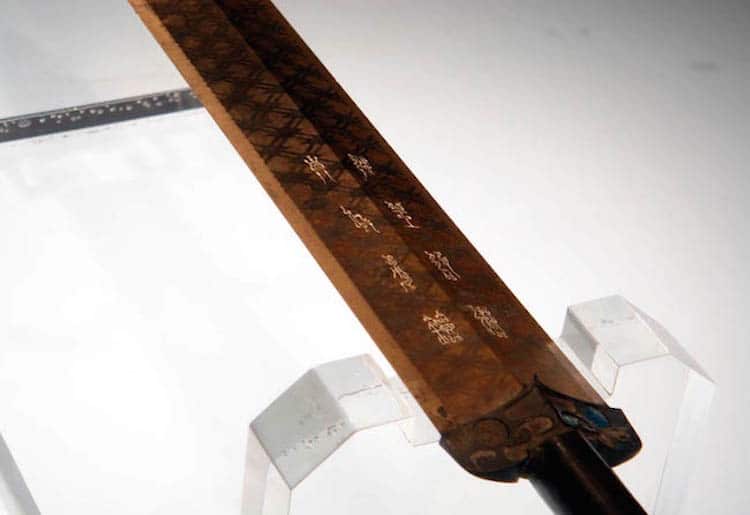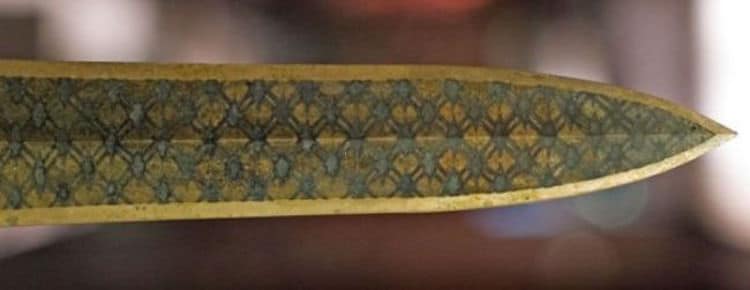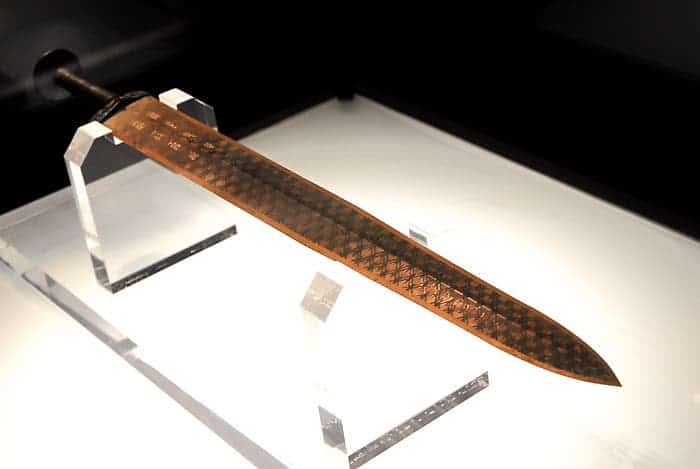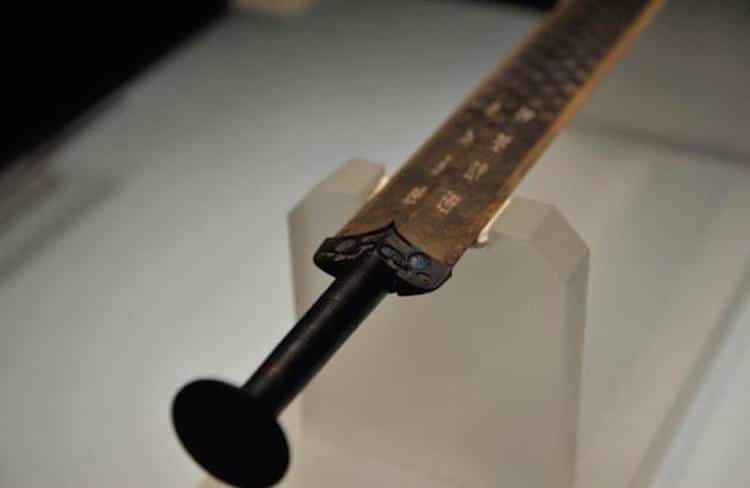The Sword of Goujian is an archaeological artefact belonging to the Spring and Autumn period (771 to 403 BCE) found in 1965 in China.
The Spring and Autumn Period was a feudal era renowned for military expeditions; these conflicts led to the perfectioning of weapons to the point that they were incredibly resistant and deadly, taking years to forge and lasting for centuries, or even more. Such is the case with the Goujian Sword, which was recovered 7 kilometers (4.3 mi) from the ruins of Jinan, an ancient capital of Chu.
The sword has two columns of text on the sides; an analysis of the text on one side revealed that the sword belonged to the King of Yue, and the other one wrote ‘made this sword for [his] personal use’.


The historical identity of the king, however, sparkled some archaeological controversy; after years of discussion and scholarly debate, the general consensus was that it belonged to Goujian, the King of Yue made famous by his perseverance in times of hardship.
Aside from the absolutely remarkable fact that the sword has no tarnish whatsoever, its blade is still sharp! Researchers have used modern hi-tech equipment to figure out how this was possible. They found out that the body of the sword is made of copper, which makes it far less likely to shatter, the edges have a higher quantity of tin, which makes them more likely to remain sharp, and the sword also contains traces of sulfur, decreasing the chance of tarnish apparition. These conditions, as well as the air-tight scabbard, made it possible for the sword to still be useful as a fighting weapon today.
Was this helpful?





